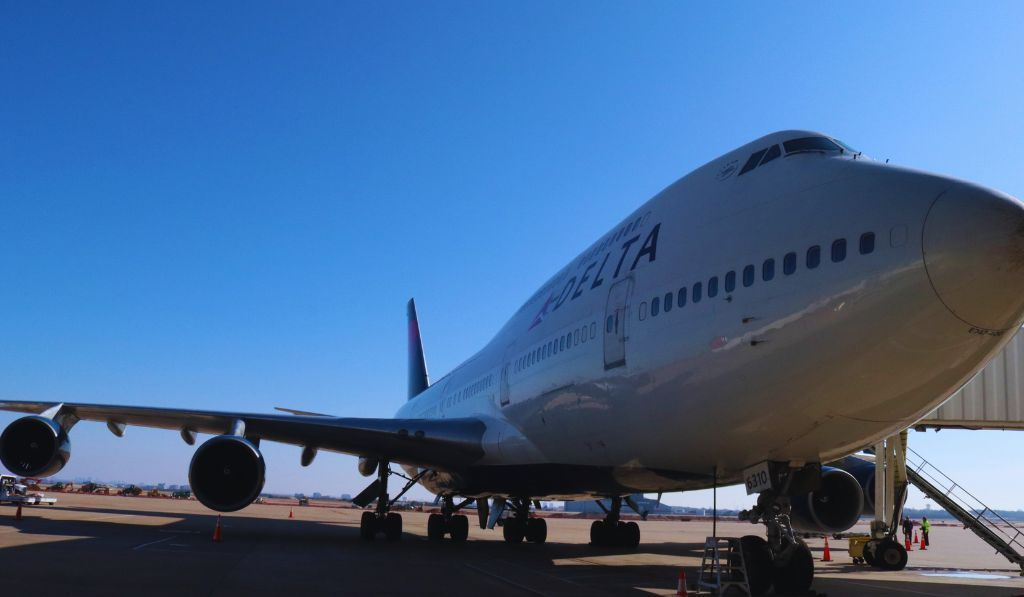Delta Flight dl275 diverted lax: The $2.3M Aviation Crisis That Exposed Critical Safety Gaps

Delta flight dl275 diverted lax took off Detroit gate A46 on May 27, 2025 and headed to Tokyo Haneda Airport, but five hours into the flight in the air over the Bering Sea, there was a critical anti-ice system failure and the crew was forced to make an emergency landing at Los Angeles international airport.
It was one of the most costly single flight diversions in the history of Delta as it cost them an estimated amount of 2.3 million dollars and 287 passengers and crew members were affected.
What Went Wrong with Delta flight dl275 diverted lax?
The Critical System Failure
The Airbus A350-900 (reg. N508DN) aircraft was over the North Pacific aircraft, 620 nautical miles southwest of Anchorage, when the aircraft flight crew reported a malfunction of the Rolls-Royce Trent XWB engine anti-ice system.
In such systems air used is engine bleed air that is used to warm some areas of the aircraft and prevent the formation of ice on the aircraft’s significant surfaces like engine inlets and wing leading edges.
The 5-Hour Emergency Return Journey
Having recognized the problem, the flight crew decided to turn around and spend 5 hours flying to Los Angeles Airport. The flight took a combined flight time of about 12 hours and 15 minutes including the 5 hours it spent on the Bering Sea diversion decision.
Technical Analysis of Delta flight dl275 diverted lax: Why This System Matters
The Aircraft Anti-Ice Systems.
Anti-ice systems are the most important elements of aircraft safety, particularly, in trans-oceanic flights when there are no alternative landing sites.
Ice formation on the engines at high altitudes is prevented by the system and failure of the system can be very dangerous when the plane is making long journeys over the ocean.
Anti-ice systems malfunction and it is unsafe to fly under even mild icing conditions, as the ice can decrease lift and change engine performance characteristics.
The Airbus A350’s Safety Protocols
The high level of flight management systems must have put the crew on notice of the malfunction by displaying various warning signals in the A350.
The aircrafts in the contemporary world have redundant safety systems, yet there are some critical failures, such as anti-ice systems in the engines, which must be dealt with immediately, and in most cases demand diversions to the nearest convenient airport.
Passenger Experience During the Emergency
Crew Communication and Passenger Response
According to the passengers, the crew was open and did not raise unnecessary panic. Aviation crews are professionally prepared to report on the emergencies and announcements are composed in a friendly and professional manner without incurring panic among passengers.
Passengers said later that there was a broad range of emotions, relief, anxiety and missed connection but they gave the crew a high rating due to clear communication and professional care.
Delta’s Passenger Care Response
Following the Delta flight dl275 diverted lax, Delta offered hotel rooms, meal checks and assisted in re-reserving passengers on other flights to Tokyo.
Customers were sent personal messages and emails with updated information about rebooking, information about the delay and accommodation.
Financial Impact and Industry Implications
The $2.3 Million Cost Breakdown
The overall financial cost of the financial impact of Delta flight dl275 diverted lax unplanned landing to Delta was approximately 2.3 million dollars in fuel costs, aircraft repairs, accommodations and rebooking costs of passengers. The high cost is an indication of:
- Fuel burn for the extended 12+ hour flight path
- Aircraft positioning and maintenance costs
- Passenger hotel accommodations and meals
- Re-booking charges and other transportation.
- Crew overtime and scheduling disruptions
Aviation Safety Implications
The emergency landing Delta flight dl275 diverted lax in LAX was interpreted as a precautionary emergency because of the engine system fault and the aircraft landed safely without any injury. The 287 passengers and the crew landed safely at the LAX with no injuries.
“Read also: drivingmadio do a barrel roll 2 times
The Role of Predictive Maintenance Technology
Future Prevention Strategies
Aviation workers observed that AI predictive maintenance systems could have indicated sensor decline prior to takeoff. The accident showed how weak the current aviation systems are but also the potential of predictive maintenance technology to be revolutionary.
With the aviation sector adopting novel monitoring solutions, accidents such as the one described in this case show that a single technical malfunction may cost airlines millions of dollars and that AI-driven predictive maintenance can be the solution to revolutionization.
Flight Tracking and Monitoring
Real-Time Flight Status Updates
To monitor the status of a flight DL275, passengers may rely on such web-based tools as FlightAware or the portal of the Delta company to know the real-time position. The accident showed the value of complex flight monitoring systems in terms of efficient functioning and communication with passengers.
Historical Context of DL275 Diversions
The DL275 route had not been spared of this incident. In July 2025, Delta flight dl275 diverted lax a second time because of a cabin pressure alert, which indicated possible ongoing technical difficulty with this route or type of aircraft.
Industry-Wide Safety Protocol Analysis
Long-Haul Flight Safety Standards
The accident casts new doubts on the safety measures taken during long-haul flights, in the sense of:
- Engine system redundancy requirements
- Trans-Pacific trans-Pacific alternate airport planning.
- Crew training for extended emergency situations
- Passenger communication protocols during lengthy diversions
Regulatory Response and Oversight
Such incidents are monitored by aviation authorities all the time to detect systemic faults and revise safety measures.
The thoroughness of this diversion, which included weather factors, calculations of fuel, and passenger safety, offers some useful information to enhance the emergency response protocol in the future.
Lessons Learned and Future Implications.
Operational Improvements
Openness on such occasions is a way of alleviating anxiety among the passengers and creating long-term customer confidence in a time when the news travels fast and customer loyalty may be lost easily.
The event demonstrates the difficulties, as well as the achievements of the modern aviation crisis management:
Successful Elements:
- Swift crew decision-making
- Safe execution of emergency procedures
- Comprehensive passenger care
- Transparent communication
Areas for Improvement:
- Predictive maintenance implementation
- Enhanced system redundancy
- Better weather routing programs.
- Automated passenger rebooking.
Technical Specifications and Flight Details
Aircraft and Route Information
- Aircraft: Airbus A350-900
- Registration: N508DN
- Engine Type: Rolls-Royce Trent XWB
- Original Route: Detroit (DTW) to Tokyo Haneda (HND)
- Diversion Airport: Los Angeles International (LAX)
- Flight Duration: 12 hours 15 minutes total
- Passengers/Crew: 287 total
Critical System Involved
The anti-ice system of the Rolls-Royce Trent XWB engine is the latest aviation technology that is meant to perform well under different weather conditions. This system failure caused by trans-oceanic flight proves the extreme need of redundancy of the safety systems and crew training.
Conclusion
Delta flight dl275 diverted lax can be considered an interesting case study in the context of contemporary aviation crisis management.
Although the cost associated with the Delta flight dl275 diverted lax is immense (2.3 million dollars), the fact that the incident was solved successfully with no injuries proves the effectiveness of safety measures and training programs to be taken by the crew.
This incident underlines the fact that modern aviation is perpetually changing, balancing the efficiency of the operation with the safety of the passengers and adopting the latest technologies such as predictive maintenance as a way to stop such incidents in the future.
The overall response by Delta which involves open communication to the passengers; effective rebooking processes and extensive accommodation services has become a benchmark in airline crisis management during the digital era.
With the aviation sector still progressing toward predictive maintenance and greater safety protocols, accidents such as the Delta flight dl275 diverted lax give essential data points toward enhancing both operational processes and passenger satisfaction in case of an unforeseen outcome.






